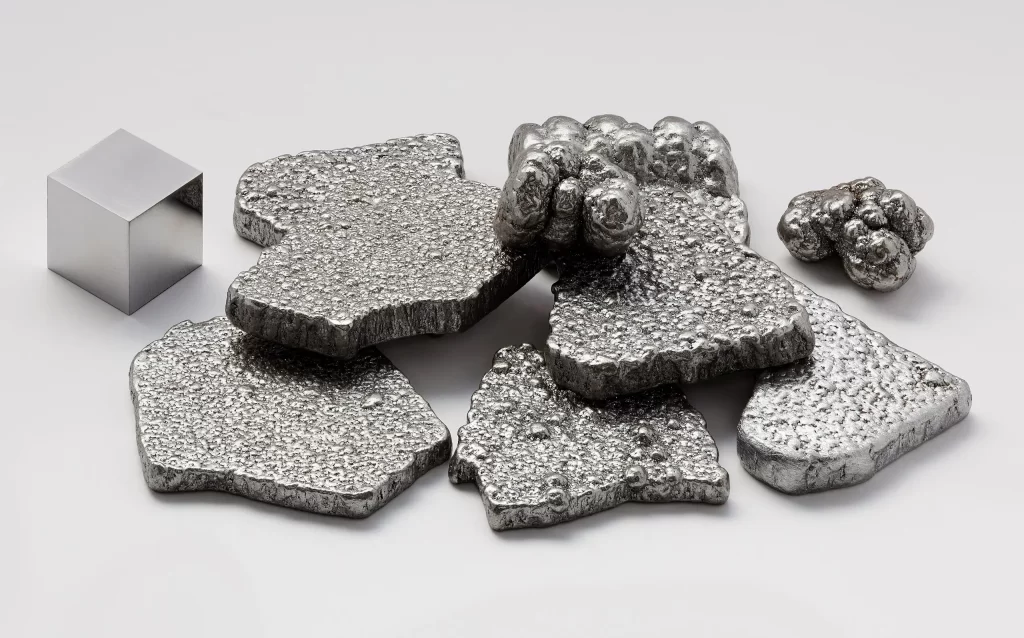In the realm of materials science, the classification of substances into metals, semiconductors, and conductors serves as the cornerstone for understanding and harnessing the electrical properties of materials. These three categories exhibit distinct behaviours with respect to the flow of electrons, influencing their applications in various technological domains. This article provides a detailed exploration of metals, semiconductors, and conductors, shedding light on their unique characteristics and the pivotal roles they play in the world of electronics.
1) Metals :

Metals are renowned for their exceptional conductivity, making them indispensable in numerous technological applications. Their properties arise from a distinctive atomic structure and the behaviour of electrons within this structure.
- Atomic Structure: Metals consist of closely packed atoms arranged in a crystalline lattice. The outer electrons of these atoms are loosely bound and can move freely throughout the material, creating what is known as a “sea of electrons.”
- Electrical Conductivity: The abundance of free electrons facilitates high electrical conductivity, enabling metals to efficiently carry electric currents with minimal resistance.
- Ductility and Malleability: Metals are characterised by their ductility and malleability, allowing them to be stretched into wires or shaped into thin sheets without losing their structural integrity.
- Common Examples: Copper, aluminium, iron, and gold are prominent examples of metals.
2) Semiconductors :
Semiconductors occupy a unique position in the spectrum of electrical materials, displaying intermediate conductivity between metals and insulators. Their distinctive properties are crucial for the functioning of electronic devices.
- Atomic Structure: Semiconductors, such as silicon and germanium, possess a crystalline structure. Doping, the intentional introduction of impurities, is often employed to modify their electrical properties.
- Bandgap: Semiconductors exhibit a bandgap – an energy gap between the valence band and conduction band. This bandgap determines their conductivity. Doping allows for the controlled manipulation of this bandgap.
- Applications: Semiconductors are the backbone of modern electronics, powering devices such as transistors, diodes, and integrated circuits. They play a pivotal role in computers, smartphones, and various electronic systems.
3) Conductors :
Conductors, like metals, are materials with high electrical conductivity, allowing them to efficiently transmit electric currents. While metals fall under this category, other conductors broaden the spectrum of materials with excellent electrical conduction.
- Conductivity: Conductors enable the easy flow of electrons. Unlike metals, some non-metallic materials, such as certain solutions and plasmas, also exhibit high conductivity.
- Examples: Besides metals, other conductors include certain solutions with dissolved ions, graphite, and even the ionised gases found in plasmas.
- Applications: Conductors are fundamental in the construction of electrical circuits and are crucial for the transmission of electricity in power lines.
The properties of metals, semiconductors, and insulators can be compared based on several key characteristics. Here’s a brief overview:
• Conductivity:
Metals: High electrical conductivity.
Semiconductors: Moderate electrical conductivity, can be controlled.
Insulators: Low electrical conductivity.
• Band Structure:
Metals: Overlapping energy bands with free electrons.
Semiconductors: Small energy gap between the valence and conduction bands.
Insulators: Large energy gap between the valence and conduction bands.
• Electron Mobility:
Metals: High electron mobility.
Semiconductors: Intermediate electron mobility.
Insulators: Low electron mobility.
• Temperature Dependence:
Metals: Typically have increased resistance with temperature.
Semiconductors: Resistance decreases with temperature up to a certain point.
Insulators: Generally exhibit little change in resistance with temperature.
• Thermal Conductivity:
Metals: High thermal conductivity.
Semiconductors: Intermediate thermal conductivity.
Insulators: Low thermal conductivity.
• Examples:
Metals: Copper, aluminium, gold.
Semiconductors: Silicon, germanium.
Insulators: Rubber, glass, wood.
• Behaviour in Electric Fields:
Metals: Electric fields have little effect on their conductivity.
Semiconductors: Conductivity can be modified by an applied electric field.
Insulators: Electric fields can cause limited electron movement.
• Usage:
Metals: Used in electrical wiring, conductors.
Semiconductors: Essential in electronic devices (transistors, diodes).
Insulators: Used to insulate and prevent electrical conduction.
Conclusion:
The diverse properties exhibited by metals, semiconductors, and conductors underscore their essential roles in the world of materials science and technology. Whether conducting electricity efficiently like metals, providing the foundation for electronic devices as semiconductors, or facilitating current flow as conductors, each category contributes uniquely to the advancement of electronics and electrical engineering. As we continue to push the boundaries of technological innovation, a deeper understanding of these materials opens up avenues for groundbreaking developments in fields ranging from telecommunications to renewable energy.
Remember that these are general characteristics, and there can be variations and exceptions based on specific materials and conditions. The comparison is often visualised in energy band diagrams, which illustrate the arrangement of energy levels in a material.




